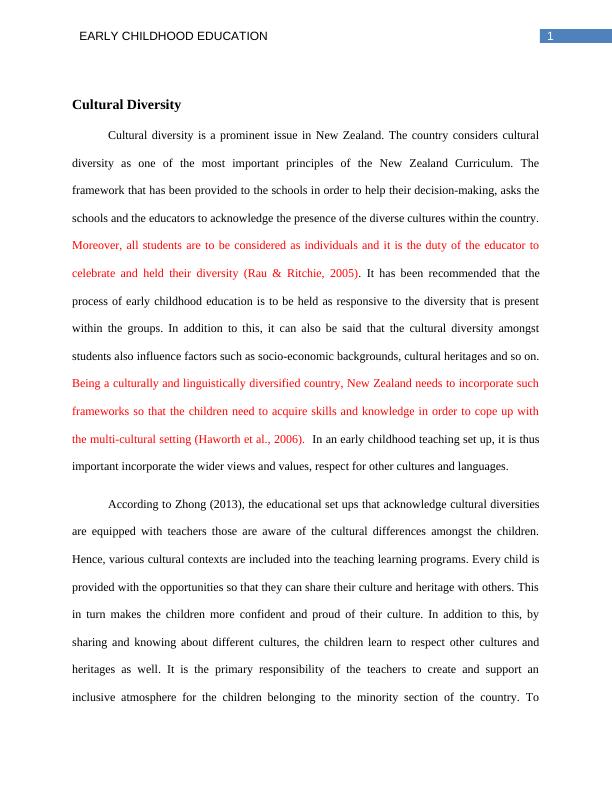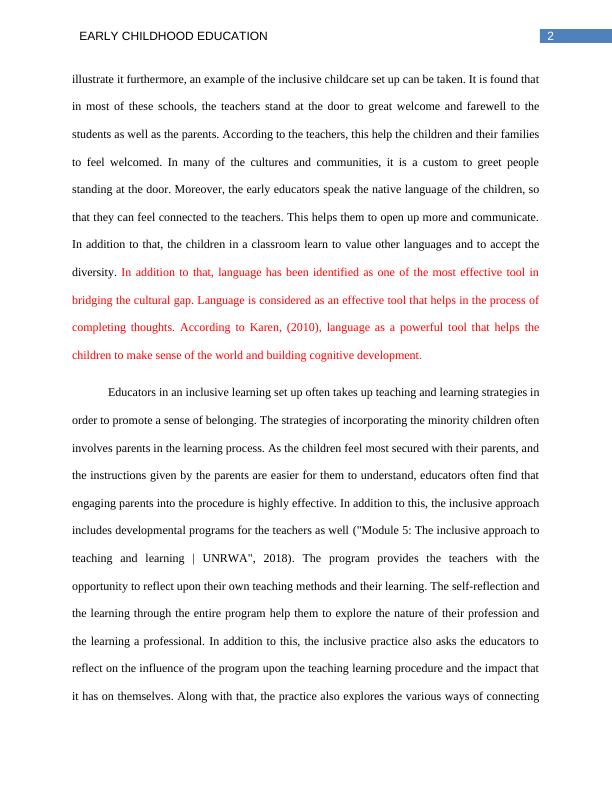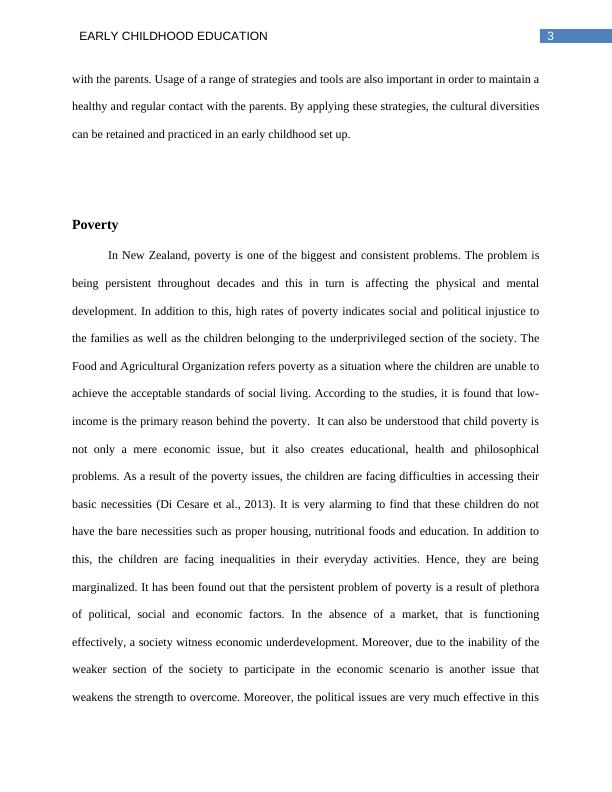Early Childhood Education: Cultural Diversity, Poverty, and Children with Diverse Abilities
Write three short critical discussion papers on sociocultural concepts in relation to the learning and socialisation of young children, with a focus on cultural diversity and poverty in New Zealand.
11 Pages3300 Words360 Views
Added on 2023-06-07
About This Document
This article discusses the issues of cultural diversity, poverty, and children with diverse abilities in early childhood education in New Zealand. It explores the inclusive approach and strategies for teachers to promote social inclusion and equal rights for all children. The article emphasizes the importance of acknowledging cultural diversity, addressing poverty, and providing a caring and supporting environment for children with diverse abilities.
Early Childhood Education: Cultural Diversity, Poverty, and Children with Diverse Abilities
Write three short critical discussion papers on sociocultural concepts in relation to the learning and socialisation of young children, with a focus on cultural diversity and poverty in New Zealand.
Added on 2023-06-07
ShareRelated Documents
End of preview
Want to access all the pages? Upload your documents or become a member.
Early Childhood Teaching from Diverse Culture and Language
|7
|1972
|459
Contemporary Approaches for Teaching Communication and Literacy in Early Childhood Education
|10
|2376
|50
Teaching Strategies for Culturally Diverse Students
|5
|1293
|58
Report on Technology Effect in Child Development
|8
|1578
|235
Supporting Inclusion in Early Childhood Education
|11
|2955
|228
Linguistic Diversity in Early Childhood Assignment
|13
|3254
|284




